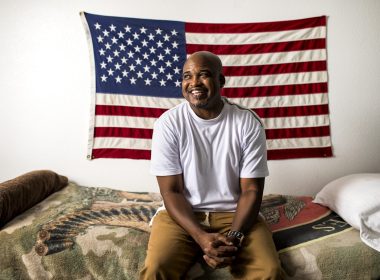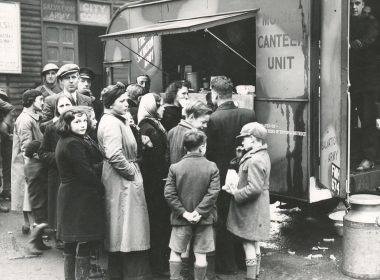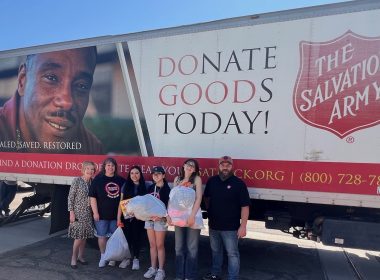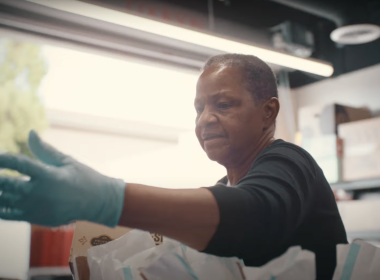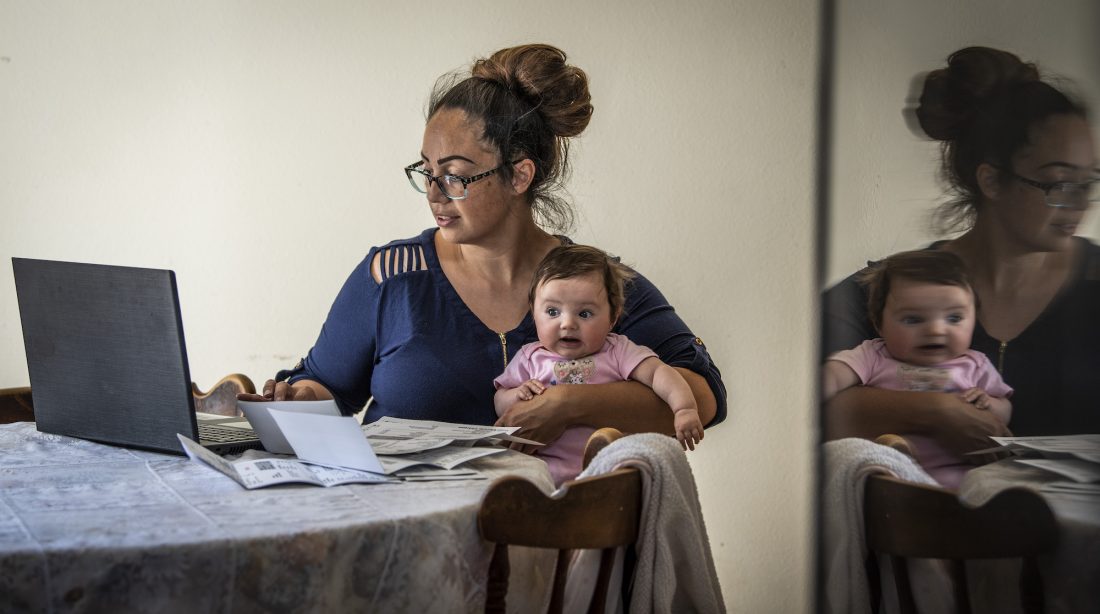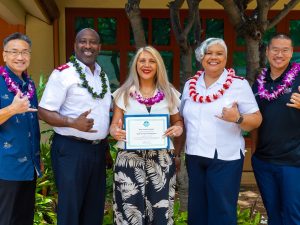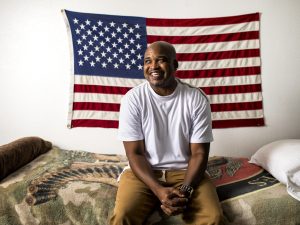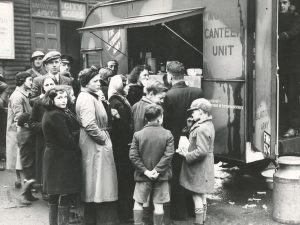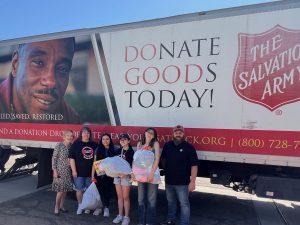With individual aspirations in mind, The Salvation Army is helping families create a plan of action to stop the chronic cycle of poverty.
It’s been an especially hard time to be poor in America.
Last fall, a Columbia University study found the number of Americans living in poverty grew by 8 million since May 2020—putting the total at 55 million people. It marked the biggest jump in a single year since the government began tracking poverty 60 years ago.
For a family of four, living “below the poverty line” means the household earns a combined $26,500 or less.
“The impact of poverty is not simply economic,” said Dr. Elaine Waxman, a senior fellow in the Income and Benefits Policy Center at the Urban Institute, a nonprofit research organization, who previously served as vice president of research and nutrition at Feeding America. “We know that individuals who live in poverty or near poverty have much more significant health issues, more likely to develop chronic health conditions, and…children who grow up in poverty are not positioned to do as well in school or to have the opportunities that would allow them to access mobility for the future.”
In fact, studies suggest children who spend at least half of their lives in poverty are 32 times as likely to be poor as adults, according to the Brookings Institution. That means a continued, intergenerational cycle of life-long poverty for the roughly 1 in 6 kids who live in poverty today—12.5 million children according to the latest data.
But it doesn’t have to be this way. With access to adequate resources, support and guidance, there is a way out.
That’s the premise of The Salvation Army’s national initiative—the Pathway of Hope—which began roughly 10 years ago to provide individualized services to families with children. By addressing immediate material needs and providing long-term engagement, it aims to stabilize families and stop the chronic cycle.
The essential ingredient? Hope.
Finding a mindset of possibility
In the social services realm, success is often measured by self-sufficiency—one’s ability to live independent of financial or material assistance.
“Those are typical definitions that exist of self-sufficiency, truly being independent from any help out there, but in a true sense, who is really self-sufficient was the question at hand,” said Dr. Philip Hong, Founding Director of the Center for Research on Self-Sufficiency (CROSS) at Loyola University Chicago in addition to his roles as a professor, Associate Dean for Research and Director of the Doctoral Program. With CROSS, he’s long been involved in studies of the Pathway of Hope. “We learned it’s a process, not an outcome…a process of moving from barriers to hope.”
Hong and his colleagues found four psychological variables, or pillars, that affect a person’s self-sufficiency: psychological empowerment, having self-worth and feeling capable to achieve the goal; futuristic self-motivation, seeing the future and wanting to move forward to reach the goal; skills and resources; meeting requirements of employers and those needed to get the jobs, including training; and goal orientation, assessing if you’re on the path, standing still or moving forward toward your goal.
– Identify client aspirations and strengths to ensure clients’ plans are authentic and sustainable.
– Focus on root causes instead of symptoms, especially barriers to education, employment, well-being and stability that emerge at the earliest stages of a child’s and family’s development.
– Create a holistic plan of action supported by relevant services, both within The Salvation Army and outside it.
That psychological empowerment—hope—is what Dr. Suzanne Phillips, a licensed psychologist, psychoanalyst, and Fellow and Co-chair of Community Outreach for the American Group Psychotherapy Association (AGPA), said provides resilience.
“It allows you to believe someone cares,” she said. “That changes the thinking so all of a sudden there’s a mindset of possibility.”
In one large, randomized trial involving 21,000 people in six countries, families experiencing extreme poverty received aid in the form of a cow, goats or bees. Dubbed “the graduation program” as it aims to “graduate” people from poverty, the effort found substantial economic return—433 percent in India.
“It was enough magic to stir hope,” Phillips said. “When you give people the ingredients to actually have a sense of agency, meaning I can do something that could help my own poverty—and not only economic poverty, but poverty of spirit, poverty of self-esteem, poverty of a despair of not being able to feed your children—when you give someone something that gives them agency, it expands.”
When researchers reviewed the results, Phillips said, they acknowledged “it can’t just be the things we gave them. It has to be the power of hope.”
That power is both psychological and physiological, as Dr. Jerome Groopman explores in his book, “The Anatomy of Hope: How People Prevail in the Face of Illness.” When we are hopeful, we release feel-good hormones, endorphins, rather than the cortisol we would release under stress. And you build hope, Phillips said, incrementally.
“You break down the pathways that give a person agency into very small, doable steps,” Phillips said. “You know, they say the journey of a thousand miles begins with a step.”
She said to think of hope as willpower and waypower.
“If you hope that you’ll be fine, but you never take your medication, I don’t know that you’re going to be fine,” Phillips said. “It’s not magic, it’s action-oriented. The propeller about hope is believing in the possibility.”
Developing an approach to finding solutions
The Salvation Army has offered soup, soap and salvation since 1865. Just last year, the organization served more than 31 million Americans in need. (That’s almost one person every second, every day.)
While meeting immediate needs is part of the organization’s longstanding fight against hunger, homelessness, disaster, addiction and more, The Salvation Army is not only interested in filling a stomach or providing shelter for today—which goes back to a gathering of Salvation Army leaders more than a decade ago, when an advisor posed a pointed question. “You’ve served a lot of people,” he said, “but what are you doing to solve the issues?”
That question ignited what we now know as Pathway of Hope. It’s not a program, but an approach to finding solutions.
“That was the meat of it—we don’t just serve people over and over again,” said Commissioner Carol Seiler, who retired in 2017 as a Salvation Army territorial leader in the central U.S. and recently helped establish the Pathway of Hope in the Northwest Division, based in Seattle. “What we needed to be doing was to see what caused them to be in those positions of asking over and over again.
“And so we moved from a mindset of just processing as efficiently as possible to saying, ‘you know what, let’s walk alongside folks and make a difference for children,” she said. “Let’s really dig deeper and see what we need to do to actually make an impact.’”
Today, the Pathway of Hope operates with a baseline set of practices to meet the needs of families with children. Case managers work with families to develop an action plan that includes personal aspirations and practical actions, and connect them to relevant Salvation Army and other community resources. The focus is on root causes rather than symptoms, especially barriers to education, employment and stability—to interrupt a family’s crisis with a targeted set of services that enables them to break the cycle and achieve sufficiency.
“It’s a holistic approach. It’s what you would do to help a friend or a neighbor, a family member—it’s an approach that permeates what we do,” Seiler said. “What case management does is take the problems, the barriers, issue by issue and start to untangle them and resolve them.”
Each family is assessed upon entry on the Self-Sufficiency Matrix, which ranks severity of barriers in 15 areas from housing to employment, childcare, mobility, and mental health and is reevaluated every three months. Services are then tailored to that family’s needs.
“Let’s say your car was impounded. That means you can’t get to work on time because you can’t drop off a child and then go across town to your job. So you lose your job,” Seiler said. “Paying the impound fee becomes an important case management approach.”
Simultaneously, families are assessed on the Herth Hope Index, a 12-item instrument designed to measure one’s sense of hope and reassessed every three months. It’s based on the definition of hope as being a “multidimensional life force characterized by a confident yet uncertain expectation of achieving a future good.”
And all the way, families are paired with a case manager who focuses on their strengths rather than their deficits—on possibilities rather than problems.
Since its creation, some 12,430 families have been enrolled in the Pathway of Hope across the U.S. Of them, 70 percent achieved increased stability. Fifty-six percent report increased hope.
– Temporality and future – the presence of goals and a positive outlook on life vs. fear of the future.
– Positive readiness and expectancy – a sense of direction and the ability to see a light at the end of the tunnel.
– Interconnectedness – a sense of isolation vs. giving and receiving love.
“I love that there is an evidence-based approach to it, that there’s data. I love that it requires people to do some thinking and problem-solving,” Seiler said. “And I love that it allows the client to direct that, because my goals as a middle-class white woman may be different than someone who’s come into the community and is learning a new language. My goals may be different than somebody who’s 25 and just starting out with a baby or one of the families recently in this area, a 22-year-old living in her car who was now about four months pregnant. We took her on as a Pathway of Hope family here because the future of the child was a part of the goals of this mother.”
And it’s impacting The Salvation Army, too.
“We’re seeing a whole new engagement in our frontline staff. Our staff needed Pathway of Hope. They needed to see success for themselves as well,” Seiler said. “When you’re just pushing out food boxes or writing checks, there’s not a lot of success or satisfaction. People want to help people succeed.”
Hoping for a better life
In a rural town of less than 10,000 people just 20 miles from the Canadian border and flanked by two Native American reservations, Trina Crawford found early on in her work that the most effective approach is the preventative one. As Director of The Salvation Army Service Center in Havre, Montana, Crawford advocates for those in need and offers immediate relief where she can.
And some of these individuals she engages in the Pathway of Hope.
“We are helping about four people a year in a way that is totally, radically changing their lives,” she said. “And they’re actually giving back to the community where before they used to take away from it.”
She said many of those she works within the area are coming out of prison or addiction.
“We work on whatever it is that’s stopping them from succeeding in whatever area,” she said. “Ultimately, we come up alongside people and surround them on the front-end with a healthier community so that they can get better.”
And she keeps them busy, engaging participants in 30 hours of activities per week, from outpatient treatment, if applicable, to meeting with a mentor, joining a church community and volunteering.
“God took me out of a really dark place…there’s a line in a song that ‘all I had to offer him was brokenness and strife, but he made something beautiful of my life’ and that is my life,” she said. “I got the help I needed through Christ and so I want those I’m helping to see that God is good, that he loves us, that we are important to him and that we are more than our decisions.”
Crawford has worked with Ronnie for the past five months, taking steps toward finding an apartment and a job.
“I was unemployed and me and my daughter had nowhere to go; we were living with family, couch to couch, whatever,” he said. “I was in treatment court because I used to drink all the time. My counselor got on the phone and got a hold of Trina.”
In Pathway of Hope, there’s always a task to be done and “I just don’t give up,” Ronnie said.
“Hope, for me, is just to do better. My life is good but with this hope, there’s even better,” he said. “I want to find a better paying job and be a better parent to my daughter. I’m raising us.”
Through his lens in researching self-sufficiency, Hong said the connection between Crawford and Ronnie is notable.
“We were able to learn that the relational component is really critical,” he said. “What we found was this love and relational care in Pathway of Hope was helping The Salvation Army live out its mission in an era when a lot of social services is being counted by these outcomes.”
Hope is connected to one’s spiritual wellbeing, he said.
“It represents the existential meaning of why I would go toward my goal,” Hong said, offering an example: “I want to show my children that mommy can stand back up and be in charge and support our family.”
And healing, he said, happens along the way.
“It’s not just whether you have hope or not, but it’s the hope that gets cultivated through the journey,” Hong said. “It might be up and down along the way, but you’re never out of hope. You’re never lost or completely empty of hope because you’re alive. You stayed strong without giving up.”
The small steps toward one’s big goals are measured in the Pathway of Hope, and Hong said that feedback loop helps increase a person’s hope.
“It’s also contagious to people around me that my hope is no longer my hope,” he said. “It’s hope for the family. It’s hope for the community…It’s now in me and now I’m showcasing it.”
Testifying to healing and hope
The Pathway of Hope is based in Scripture—from what God requires of us, as found in Micah 6:8, to the motivation for serving suffering humanity, as found in 1 Corinthians 16:14: “Do everything in love.” That theological foundation is about joining God at the place of need and allowing him to work through us to bring his healing and hope.
And that’s exactly the testimony Lt. Katherine Reid tells.
Reid first met The Salvation Army in eighth grade, when she and her mother became residents at a shelter.
“My mom, who was struggling with drug addiction at that time, ended up losing our house. We got evicted and we had no place to go,” Reid said. “I can remember from the first time we went there it just seeming different. Everyone was very kind and loving, and everyone had chores. It seemed like you were joining in a family, which was not like any other experience I ever had.”
Years later, as a mother herself, Reid again met The Salvation Army and became a participant in the Pathway of Hope.
“It was life-altering. I’d never really experienced that kind of care and support before,” Reid said, noting her case manager would offer to come to her when she had transportation issues and the corps officers would always ask to pray with her. “And I’m just sitting here like, ‘Where did these people come from?’…I think that was a huge part of my motivation of wanting to take part in being present there and volunteering, is seeing the day-to-day joy with everyone in the office…At the time, I didn’t understand it, but now I know it was the presence of God.”
She went on to volunteer with The Salvation Army and attend worship services. Then on her first day as a ministry intern, she pulled up to the corps in Independence, Missouri, to meet with the shelter director.
“I remember talking with her and I was like, ‘If you don’t mind me asking, can you tell me what that building is next door, because it looks familiar,’” Reid said. “She was like, ‘Well, that’s our shelter,’ and she was giving me some history. But as soon as she said that, I knew.”
It was the shelter she and her mom had stayed in years ago.
“I was just overcome with emotion because I knew in that moment God brought me all the way back to where I had first started that dream,” Reid said. “It was just amazing to know that he had a plan for me from that point on, and how faithful he was in allowing me to find my way to answer that calling into ministry in every obstacle I had faced.”
This year, Reid was commissioned as a Salvation Army officer—a pastor—and now serves in full-time ministry as the Assistant Corps Officer in Bloomington, Illinois, helping others find hope, too.
“Sometimes when you find yourself in a rough place or when you’re facing so many obstacles, you get discouraged. But you are not alone,” she said. “Not only do you have the support of the people in The Salvation Army behind you, and those you don’t see like the donors and different members of the community who may be just making phone calls for you to get the assistance you need, but most importantly, you have God always in your corner.”
Checking in and taking action
One step at a time on the Pathway of Hope, participants report increasing hope on the Herth Hope Index, which parallels an increase on the Self Sufficiency Matrix.
“We call it hope action. It’s not action and hope separate, but the action that really comes from or stems from the hope that you have,” Hong said. “It’s rooted in the hope that’s been increasing over time in Pathway of Hope.”
And it all comes back to hope.
“It’s constantly going back to your hope as your anchor to keep moving forward with these actions, which allows you to check back in with hope to keep moving forward with your actions, adjusting your actions even, to reach the goal,” Hong said. “Empathy is where everything begins for any type of social innovation. And when you go back to hope as your anchor, that is empathy with yourself.”
While there may not be a formula for escaping poverty, Pathway of Hope is a tool for engaging families in daring to harness the hope to do so.
“Having hope means when you look at your situation, and all you see are things that you can’t do, you rely on the things that God can do in and through you,” Reid said. “Having hope is believing in the things that you can’t see.”
Do Good:
- What is the state of poverty in America and how is The Salvation Army responding? Listen to the Do Gooders Podcast, episodes 88-94, for a season exploring the Pathway of Hope. Subscribe to the show in your podcast player or see more at caringmagazine.org/dogooderspodcast.
- You’ve probably seen the red kettles and thrift stores, and while we’re rightfully well known for both…The Salvation Army is so much more than red kettles and thrift stores. So who are we? What do we do? Where? Right this way for Salvation Army 101.
- Are you best suited to join the Fight for Good in disaster relief? Mental health? Social justice? Take our What’s Your Cause quiz and discover where you can make the biggest impact today.


